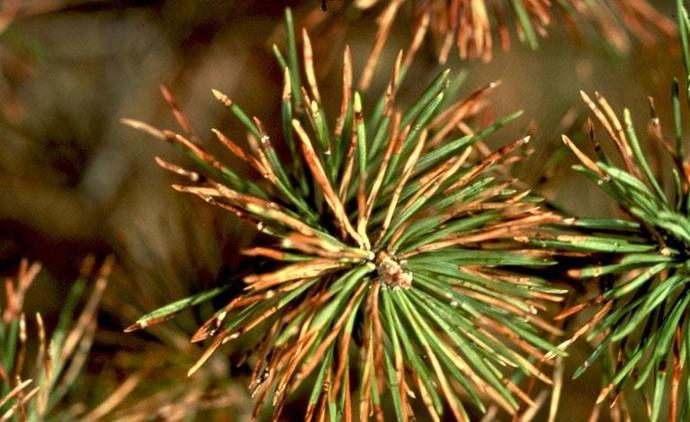Screw Pine Plant
Pandanus, also known as Screw Pine, is an outdoor plant with strap-like leaves. Plant in well-draining soil with full sun exposure. Water consistently and provide humidity. Pruning can be done to remove old or damaged leaves. Fertilize during the growing season.
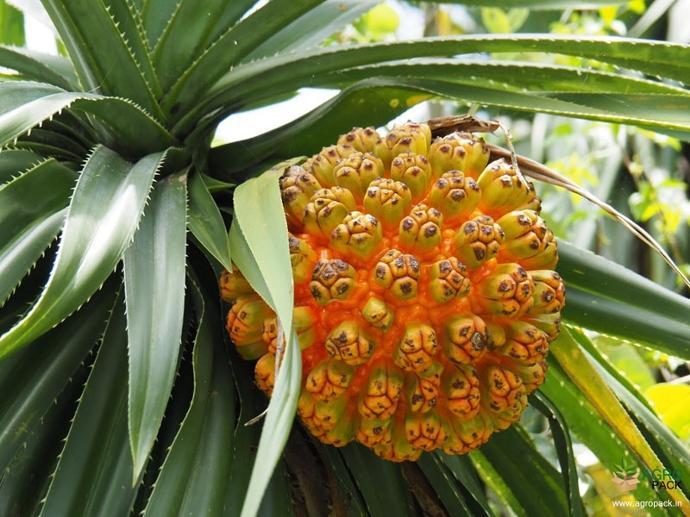
Habit
Tree
Height
3-6 m
Growth
Slow
Soil
Well-drained sandy
Shade
Full Sun
Moisture
Moist
Edible
Yes
Medicinal
Yes
Origin
Asia, Pacific
Climatic Condition
Tropical, Subtropical
Temperature (°)
18-35°C
Humidity (%)
60-90%
Potting media
Loam, peat
Fertilizers
Organic, NPK
Watering
Moderate
Plant Weight
5-10 kg
Flowering Time
Seasonal
Soil Ph level
5.5 - 7.5
Water Ph level
5.5 - 7.5
Soil EC
1-2 dS/m
Yield Per Plant
Ornamental, Fruit
NPK ratio
10:10:10
life Span
Perennial
Health Benefits
Used in perfumes, edible fruit
Suggested Grow Media or Potting Mix ?
50% loam, 25% compost, 25% sand
Suggested Fertigation/Fertilizers
Fertilize every 6 weeks with a balanced fertilizer.
Common Diseases and Remedies
Leaf scorch , Brown spot
Causes leaves to dry out and turn brown starting at their tips , This infection can cause brown spots or patches to appear on the plant.
mulching plants with a 3-4″ depth of organic mulch, such as woodchips, leaf mould, or bark and Spray neem oil.
HEALTH BENEFITS
· Culinary uses: Pandan leaves are used for flavoring and have digestive benefits.
· Antioxidant-rich: Helps reduce inflammation.
What Is An Screw pine Tree?
Creating a striking landscape effect wherever it is used, screw-pine has a pyramidal, sometimes irregular, open, but much-branched silhouette. The smooth, stout trunks is topped with full, graceful heads of long, thin leaves, three feet long and three inches wide, emerging spirally from stubby branches.
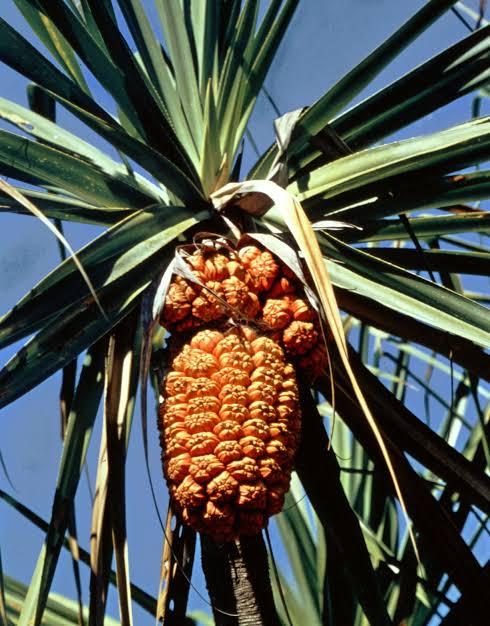
What Are The Different Types Of Screw pine Plants?
Pandanus utilis (Screw Pine): This is the most well-known species of screw pine, characterized by its long, spiky leaves arranged in a spiral pattern around the stem. It produces a fruit that is edible but not widely consumed.
Pandanus tectorius (Hala or Thatch Screw Pine): This species of screw pine is native to the Pacific Islands and is known for its use in thatching roofs. It has long, narrow leaves and produces a fruit that is sometimes eaten.
Pandanus amaryllifolius (Pandan or Fragrant Screw Pine): This species is valued for its aromatic leaves, which are used in cooking in Southeast Asian cuisine. It has long, narrow leaves and is often grown for its culinary uses.
Pandanus veitchii (Veitch's Screw Pine): This species is prized for its decorative value, with long, narrow leaves that have white stripes along the edges. It is often grown as a houseplant or in tropical gardens for its ornamental foliage.
Pandanus baptistii (Baptiste's Screw Pine): This species has long, narrow leaves with a blue-green coloration. It is often grown for its ornamental value and is relatively rare in cultivation.
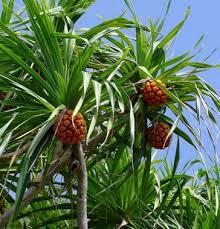
Location
pandanus, (genus Pandanus), any of some 600 tropical species of Old World trees and shrubs of the screw pine family (Pandanaceae). They grow along seacoasts and in marshy places and forests of tropical and subtropical regions, especially in Asia, Africa, and Oceania.
Sunshine
While they can flourish in full sun, they're just as comfortable in the dappled light of partial shade. Indoor Screw Pines prefer bright locations but may protest if left to fry under the midday sun. If your home turns into a winter wonderland, keep these tropical beauties above 60 degrees and away from the chill.
Soil
The Pandanus tectorius – screwpine plant grows well in good areated soil rich in organic matter. Watering: Water the plants moderately, Supply water weekly once or twice on alternate days. Remember not to water the plants during rainy & winter seasons.
Hydration
Screwpine needs 0.8 cups of water every 9 days when it doesn't get direct sunlight and is potted in a 5.0" pot. Use our water calculator to personalize watering recommendations to your environment or download Greg for more advanced recommendations for all of your plants.
Nourishment
To replenish this plant's nutrients, repot your Screw Pine after it doubles in size or once a year—whichever comes first. Screw Pine prefers for the soil to dry out between waterings and should be watered regularly.
Issues
Common Pests & Diseases About Screw-pine. Natural aging can cause leaves to turn yellow and dry out. This infection can cause brown spots or patches to appear on the plant. Leaves may wilt for a variety of reasons.
Benifits
Anti-viral, anti-inflammatory, and antioxidant activities are all present in screw pine. Gout can also be treated with it. It aids in the treatment of damaged nerves.
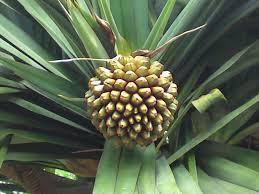
FAQs About Growing Screw pine
What is the use of screw pine plant?
Much use is made of the leaves for thatching, mats, hats, ropes, twine, sails for small boats, baskets, and fibre products, especially of those from the thatch screw pine, or pandanus palm (Pandanus tectorius), which is native to Micronesia and Hawaii, and the common screw pine
What is the other name for screw pine?
pandan
Common names include pandan, screw palm and screw pine. They are classified in the order Pandanales, family Pandanaceae.
What is the growth habit of screw pine?
Screw-Pine is capable of reaching 60 feet in height but is not usually seen over 25 feet in USDA hardiness zone 10 and 11, with a spread of 15 feet. Growth rate is slow to moderate, depending upon fertilization and watering schedules, and Screw-Pine is very popular for use as a specimen or container planting.
What are the products of screw pine?
our other screw pine products are:
tea coasters.
table mat.
trinklet holders.
bags of different sizes.
ladies fancy bags, purses, folders.
Is screw pine poisonous?
Let's set the record straight: Screw Pine is not toxic to humans. No scientific studies have shown harmful effects from touching or ingesting the plant. It's crucial to distinguish between fact and fiction, especially when it comes to the safety of our kids.

